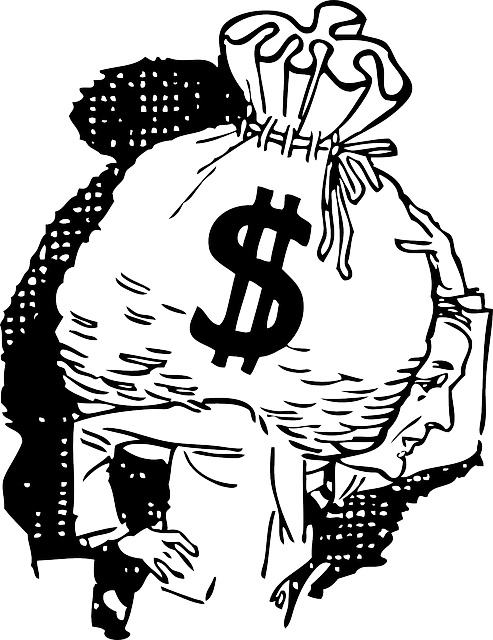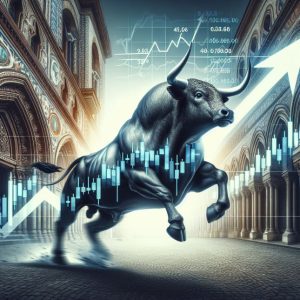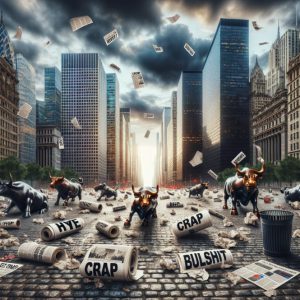
The Enigma of the Huge Risk to US Economy
Sept 18, 2023
Uncertainty Surrounding Inflation Poses Downside Risk
Over the past year, inflation in the United States has reached levels not seen since the 1980s. The consumer price index rose 8.6% in May 2022 compared to a year earlier, the fastest pace in more than 40 years. The surge in inflation has been driven by a confluence of factors, including supply chain disruptions, labor shortages, and the war in Ukraine.
While inflation is expected to moderate over the next year, there remains significant uncertainty around the inflation outlook. Forecasting inflation is notoriously difficult, even in normal times. But the current environment is far from normal, with the economy still dealing with the aftereffects of a global pandemic. This introduces major forecast risks.
If inflation proves to be higher and more persistent than anticipated, it would pose a huge risk to the US economy. Persistently high inflation would erode consumer purchasing power, weighing on consumer spending. It would also likely prompt an even more aggressive policy response from the Federal Reserve, which could tip the economy into a deeper recession.
The Fed Faces Difficult Tradeoffs in Taming Inflation
The Federal Reserve has embarked on an aggressive tightening campaign to combat surging inflation, raising interest rates faster in decades. After lifting rates by 0.75 percentage points in both June and July, the Fed is expected to continue growing rates at an above-average clip through the end of the year.
However, there are risks around how much and how fast the Fed can raise rates before triggering an economic downturn. Monetary policy acts with long lags, so the full effects of the Fed’s policy tightening have yet to be fully felt in the economy. If the Fed raises rates too high or too fast, it could push the economy into a severe recession.
On the other hand, if the Fed does not raise rates enough, inflation risks becoming entrenched. This would make getting inflation back to the Fed’s 2% target even harder. The central bank faces a tough balancing act in engineering a soft landing amid economic uncertainty.
Misjudging the amount of policy tightening needed to cool inflation poses a huge risk to the economic outlook. It raises the odds of either runaway inflation or an unnecessarily harsh recession. The Fed has little margin for policy error, given the conflicting forces buffeting the economy.
Housing Market Headwinds Threaten Consumer Spending
The housing market is flashing warning signs that could spell trouble for the broader US economy. Home sales have slowed sharply in recent months as mortgage rates have spiked to their highest levels since 2008. Affordability has cratered, pricing many buyers out of the market.
This rapid shift in housing market conditions poses risks on a couple fronts. First, declining home sales and home building will directly weigh on economic growth in the coming quarters. The housing sector has historically been an important driver of consumer spending and jobs.
Additionally, there are risks that weakness in housing will spill over to the rest of the economy through lower household wealth. Home equity has been an important source of funding for consumer expenditures over the past decade. If home prices stagnate or even decline, it would diminish consumers’ purchasing power and willingness to spend.
Given the significance of housing to the US economy, deterioration in the housing market represents a major downside risk at a time when the economy is already slowing. It threatens to turn an anticipated mild recession into something more severe unless other sectors can pick up the slack.
Fiscal Cliff Looms as Government Spending Set to Decline
Fiscal policy greatly boosted economic growth during the pandemic, with trillions of dollars in federal spending helping support households and businesses. However, government spending is set to decline precipitously over the next year, representing a significant drag on growth.
Most of the pandemic-era fiscal support programs, such as expanded unemployment benefits, have expired already. Additionally, supplemental funding for programs like the Child Tax Credit, small business grants, and aid to state and local governments were temporary measures phasing out.
The Congressional Budget Office estimates that combined federal, state, and local government purchases of goods and services will decline by $185 billion in 2023. This plunge in government spending relative to the past two years constitutes considerable fiscal headwinds for the economy.
With monetary policy also tightening aggressively, the expiration of fiscal support means the economy will lose two significant pillars propping up growth over the past two years. This leaves the economy more vulnerable to a deeper downturn, absent other growth drivers emerging.
The waning of fiscal stimulus represents a key downside risk to the economic outlook over the next year. It raises the potential for a more severe slowdown at a tenuous time for the US economy.
Global Slowdown Threatens US Exports and Corporate Earnings
The US economy does not exist in a vacuum—economic weakness abroad threatens to spill over to the US through multiple channels. With inflation rampant worldwide, global central banks are hiking rates in unison. Meanwhile, the war in Ukraine and recurring Covid lockdowns in China have disrupted global supply chains.
This confluence of factors has significantly increased the likelihood of a global economic slowdown. Europe appears headed for recession later this year. China’s economy is faltering under the strain of pandemic restrictions and a real estate crisis. And emerging markets face rising borrowing costs and capital outflows as the Fed tightens policy.
A pronounced global downturn would pose risks for US exporters as foreign demand for American goods and services declines. It would also weaken earnings for US multinational companies with significant overseas operations. This, in turn, could lead firms to reduce capital expenditures and hiring domestically.
Through these channels, an international slump threatens to impose additional drags on US economic growth. It also limits the ability of exports to partly offset weakness in other areas of the economy, such as housing and government spending.
Given high inflation and tightening financial conditions worldwide, a deteriorating global outlook represents a major risk that could help tip the US into a deeper recession than currently envisioned.
Huge Risk to US Economy: Concluding Thoughts
While the US economy still appears headed for a mild recession over the next year, risks remain heavily skewed to the downside. Persistently high inflation, Fed policy missteps, housing market weakness, waning fiscal support, and a global slowdown could all amplify the expected economic pullback.
With uncertainty abnormally high, the potential for an economic contraction more severe than forecast can’t be dismissed. Prudent risk management suggests businesses, investors, and policymakers should be prepared for a wider range of potential outcomes, including a downturn more painful than currently envisioned.
The array of risks facing the economy underscores why flexibility and caution are warranted in navigating the challenging period ahead. As the expansion stretches into its second decade, risks that could trigger a deeper recession appear elevated. While hopes remain for a soft landing, huge risks to the US economic outlook are tilted firmly to the downside.
Articles of Interest

How to define recency bias?

Currency Devaluation Wars: Navigating the Global Economic Battlefield

Investor Anxiety; Rocket Fuel for Unloved Stock Market Bull

Bear Market Bottoms: Turning a Falling Dagger into a Blazing Sword

Mastering Market Reflexivity: The Key to Outperform and Win Big

Does it make sense to invest in the stock market?

Market Perception: How Misguided Views Lead to Costly Losses

How to Make It Through the Valley of Despair?

Mastering the RSI Divergence Indicator: Your Ultimate Edge in the Market

Logical Thinking vs Critical Thinking: Your Edge to Beating the Markets

What is Market Turbulence? It’s Just Opportunity in Disguise

The Importance of Saving and Investing: Secure Your Future with Smart Moves

Why You Should Invest in the Market: The Path To Lasting Wealth

Valley of Despair Atomic Habits: Transforming Challenges into Triumph

The Pitfalls of Fear Selling: A Path to Pain and Financial Miser

Stock Market Crash Michael Burry: Hype, Crap, and Bullshit



